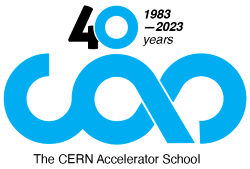Speaker
Description
The lecture presents the basic phenomenology of superconductivity. It starts with the defining properties: zero resistivity and perfect flux expulsion (Meissner effect). The latter evidences a thermodynamic phase not only perfect conductivity. Without any knowledge of the underlying mechanism, one can derive the condensation energy of the superconducting state, flux penetration at the surface and the respective magnetic penetration depth. By assuming a condensate of charged particles having a unique wave function one can further derive fluxoid quantization and the value of the respective flux quantum. This motivates the breakdown of the Meissner state at high fields in type-II superconductors as well as the occurrence of vortices. The Ginzburg-Landau theory, which describes the resulting mixed state quantitatively, is introduced. Finally, limitations for the loss free currents in superconductors are discussed together with the required vortex pinning mechanism.
